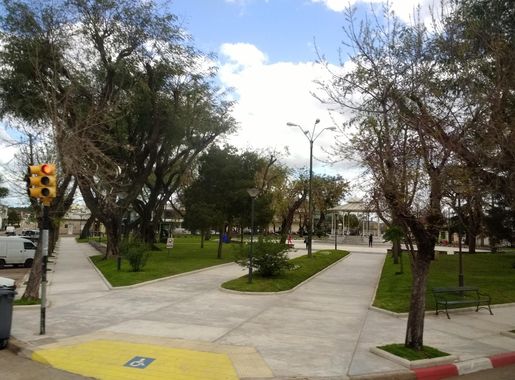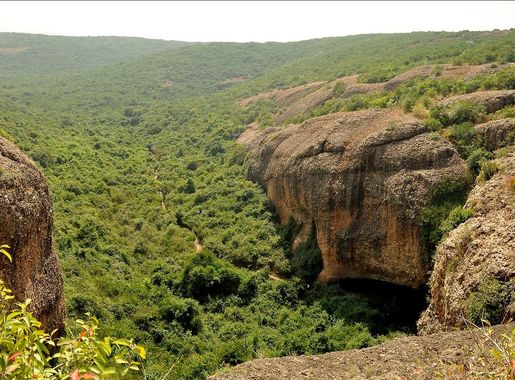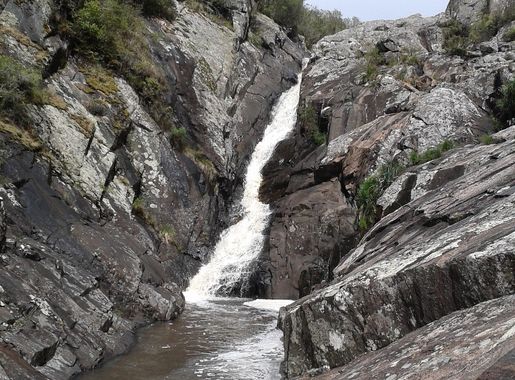
Sierra de Minas: A Natural Paradise in Uruguay
Discover the natural beauty and cultural richness of Sierra de Minas in Uruguay, a perfect destination for outdoor enthusiasts and cultural explorers.
Sierra de Minas, located in the heart of Uruguay, is a stunning natural paradise that offers a serene retreat for nature lovers and adventurers alike. This mountainous region is characterized by its lush greenery, rolling hills, and pristine landscapes, making it an ideal destination for hiking, bird-watching, and exploring the great outdoors. The area is home to a rich diversity of flora and fauna, providing visitors with a unique opportunity to witness wildlife in its natural habitat. The trails in Sierra de Minas vary in difficulty, catering to both novice hikers and seasoned trekkers. Along these trails, one can find scenic viewpoints that offer breathtaking vistas of the surrounding countryside. In addition to its natural beauty, Sierra de Minas boasts a rich cultural heritage. The region is dotted with charming villages where visitors can experience traditional Uruguayan hospitality and cuisine. Local festivals and events also add to the vibrant cultural tapestry of the area, offering a glimpse into the lives and traditions of the local people.
Local tips in Sierra de Minas
- Visit during the spring or fall for the best weather and fewer crowds.
- Bring comfortable hiking shoes and plenty of water for the trails.
- Check out local markets for fresh produce and handmade crafts.
- Hire a local guide to learn more about the region's flora, fauna, and history.
Sierra de Minas: A Natural Paradise in Uruguay
Sierra de Minas, located in the heart of Uruguay, is a stunning natural paradise that offers a serene retreat for nature lovers and adventurers alike. This mountainous region is characterized by its lush greenery, rolling hills, and pristine landscapes, making it an ideal destination for hiking, bird-watching, and exploring the great outdoors. The area is home to a rich diversity of flora and fauna, providing visitors with a unique opportunity to witness wildlife in its natural habitat. The trails in Sierra de Minas vary in difficulty, catering to both novice hikers and seasoned trekkers. Along these trails, one can find scenic viewpoints that offer breathtaking vistas of the surrounding countryside. In addition to its natural beauty, Sierra de Minas boasts a rich cultural heritage. The region is dotted with charming villages where visitors can experience traditional Uruguayan hospitality and cuisine. Local festivals and events also add to the vibrant cultural tapestry of the area, offering a glimpse into the lives and traditions of the local people.
When is the best time to go to Sierra de Minas?
Iconic landmarks you can’t miss
Salto del Penitente
Explore the enchanting Salto del Penitente, a stunning waterfall in Villa Serrana, perfect for nature lovers and adventure seekers in Uruguay.
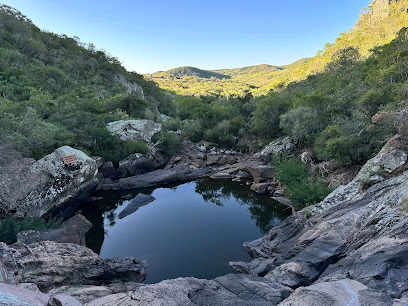
Laguna De Los Cuervos
Explore the tranquil beauty of Laguna de los Cuervos, a natural oasis in Uruguay's Lavalleja Department, ideal for camping and wildlife watching.
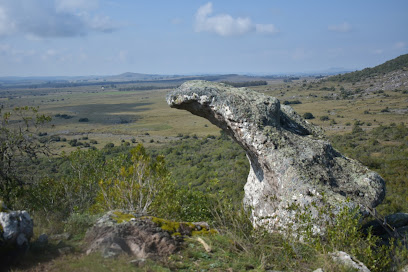
Cerro Artigas
Experience the serene beauty and historical significance of Cerro Artigas, a premier tourist attraction in Minas, Uruguay, where nature and adventure await.
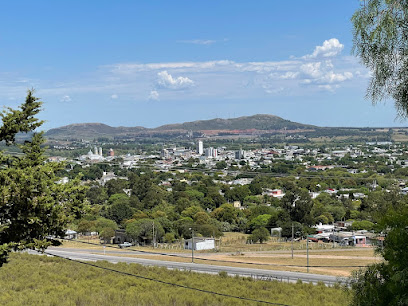
Cathedral of Minas
Discover the Cathedral of Minas, a breathtaking architectural gem in Uruguay, blending cultural heritage with serene beauty for an unforgettable experience.
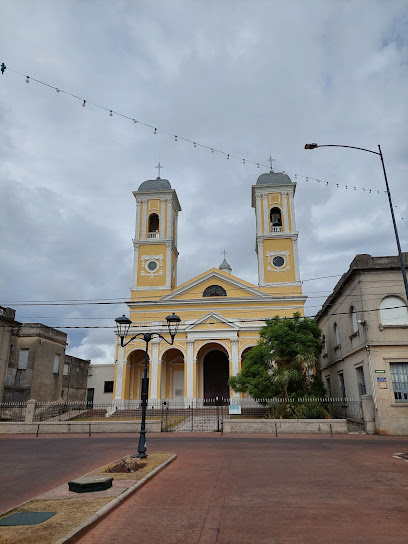
Valley thread of life
Discover the enchanting Valley Thread of Life in Lavalleja, a serene inn and cottage perfect for relaxation and cultural exploration.

Valle de Domos - MINAS
Experience the tranquility of Valle de Domos in Minas, Uruguay, where nature meets rustic charm and unforgettable farmstay adventures await.
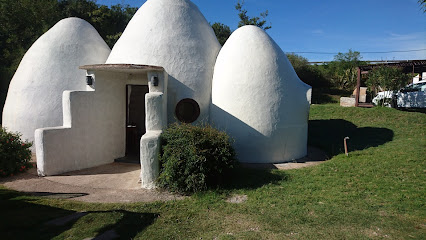
Monumento al General Artigas
Discover the Monumento al General Artigas in Minas, a majestic tribute to Uruguay's national hero surrounded by beautiful gardens and local culture.

Cerro Mistico Country Inn
Experience the serene beauty of Lavalleja at Cerro Mistico Country Inn, a tranquil retreat offering comfort and nature's wonders in Uruguay.
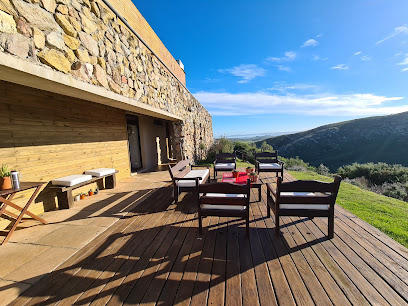
Cerro del Verdun
Discover the serene beauty and spiritual significance of Cerro del Verdun, a must-visit religious destination in Uruguay's Lavalleja Department.
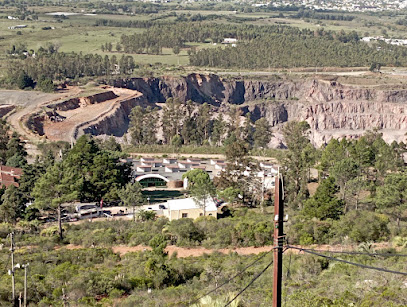
Santuario Nacional Nuestra Señora del Verdún
Explore the serene beauty of Santuario Nacional Nuestra Señora del Verdún, a sacred shrine nestled in the heart of Lavalleja, Uruguay, rich in history and natural charm.
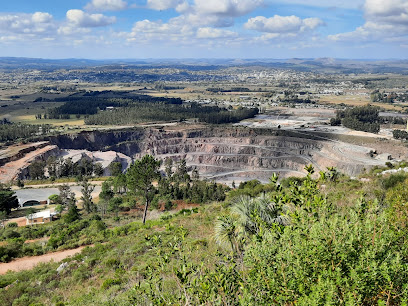
Reserva Natural Salus Park
Explore the breathtaking beauty of Reserva Natural Salus Park, a serene nature preserve in Lavalleja, perfect for relaxation and wildlife observation.
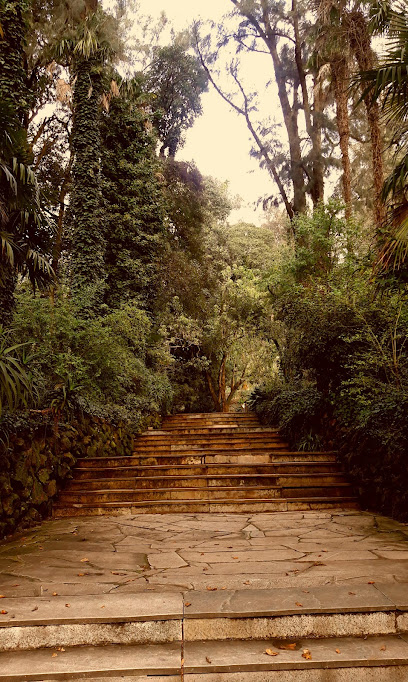
Parque de las Sierras
Explore the natural beauty and tranquility of Parque de las Sierras in Minas, a perfect getaway for nature lovers and adventure seekers alike.

Bienvenidos a Minas
Explore the enchanting town of Minas, a hidden treasure in Lavalleja, where nature and culture meet in perfect harmony.
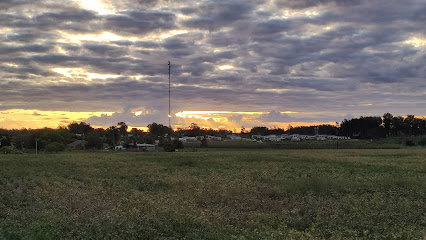
Sierras de minas
Discover the breathtaking landscapes and family-friendly activities at Sierras de Minas, an idyllic playground in Uruguay's Lavalleja Department.
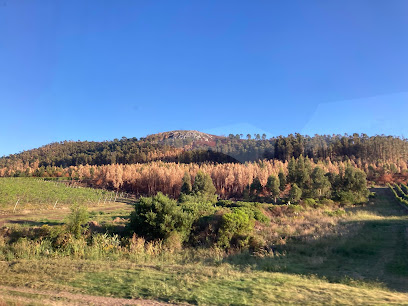
Unmissable attractions to see
Rivera Park
Discover the serenity and beauty of Rivera Park in Montevideo, a perfect blend of nature, culture, and outdoor recreation.
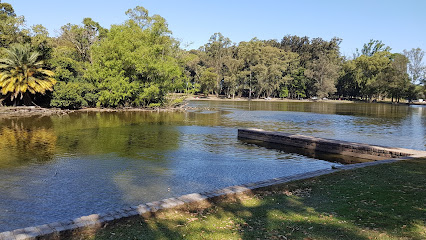
Parque de Minas Hotel Vacacional
Discover the serene beauty and comfort of Parque de Minas Hotel Vacacional, a perfect retreat in Uruguay's breathtaking countryside.

Rodó Park
Discover the serene beauty of Rodó Park in Minas, a lush sanctuary perfect for relaxation, adventure, and outdoor activities amidst nature.
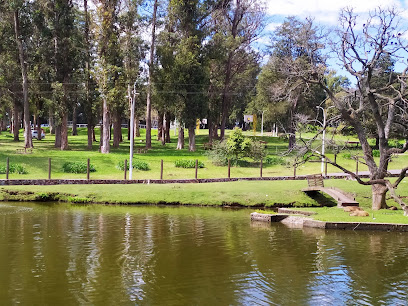
Castillo Pittamiglio Las Flores
Explore Castillo Pittamiglio Las Flores, a stunning historical castle offering rich architecture, beautiful gardens, and fascinating stories in the heart of Uruguay.

National Museum Of Visual Arts
Explore the National Museum of Visual Arts in Montevideo, where Uruguay's artistic legacy comes to life through its extensive collection and serene atmosphere.
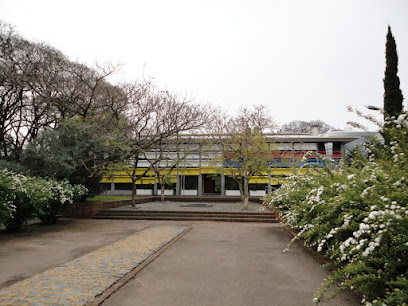
Fundación Pablo Atchugarry
Explore the unique blend of contemporary art and nature at Fundación Pablo Atchugarry, a cultural gem in Maldonado, Uruguay.
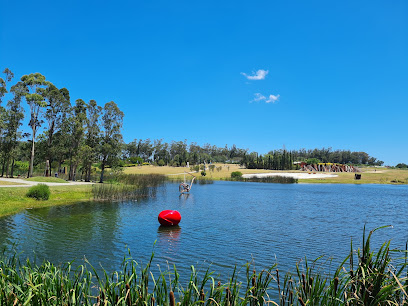
Punta Ballena
Explore the breathtaking landscapes and vibrant culture of Punta Ballena, a coastal paradise in Uruguay perfect for relaxation and adventure.

Kibón Hill
Discover Kibón Hill, Montevideo's tranquil oasis with stunning views and lush landscapes, perfect for nature lovers and urban explorers alike.
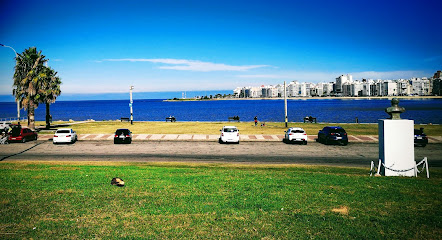
Fountain of the Padlocks
Discover the Fountain of the Padlocks in Montevideo, a romantic symbol of love where couples lock their promises and enjoy the vibrant atmosphere.
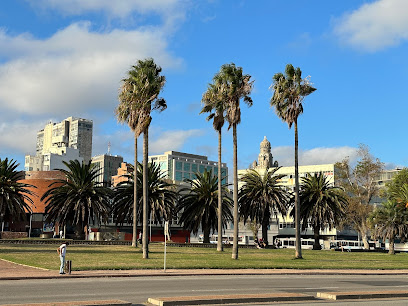
Rambla Piriapolis
Experience the charm and beauty of Rambla Piriápolis, a stunning coastal promenade perfect for leisurely strolls, dining, and vibrant local culture.
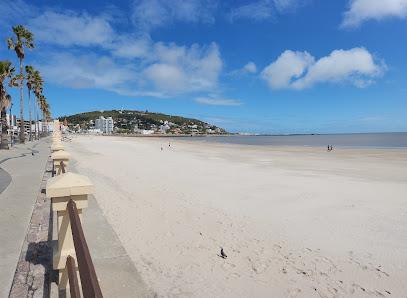
Arboretum Lussich
Explore Arboretum Lussich: A tranquil botanical garden in Maldonado, where nature thrives and beauty abounds.
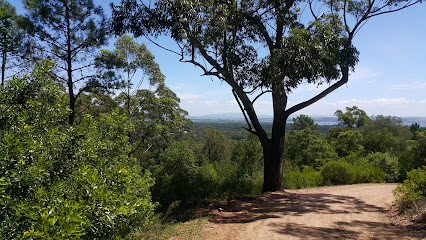
Rambla Piriapolis
Explore the enchanting Rambla Piriapolis, a stunning promenade with breathtaking ocean views, vibrant culture, and delightful local cuisine.
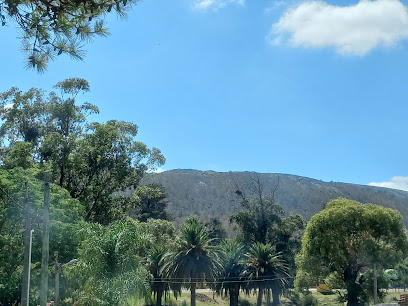
Museo Ralli Punta del Este
Immerse yourself in the vibrant world of contemporary Latin American art at Museo Ralli, a stunning attraction in Punta del Este.
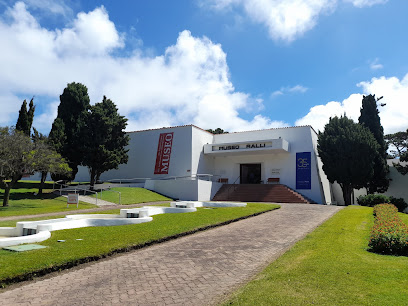
Paseo de la Pasiva
Explore the artistic beauty of Paseo de la Pasiva in Piriápolis, where creativity meets stunning coastal views.
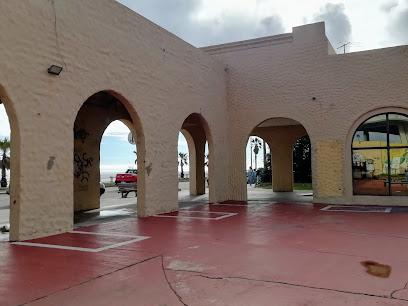
Playa San Francisco
Discover the tranquil beauty of Playa San Francisco, a stunning beach in Piriápolis, perfect for relaxation and seaside adventures.
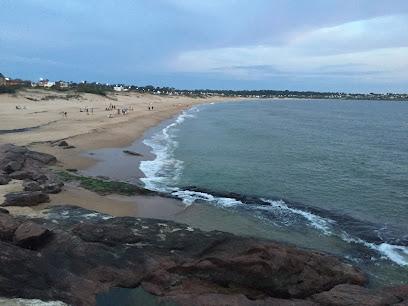
Essential places to dine
Parque de Minas Hotel Vacacional
Experience serene luxury at Parque de Minas Hotel Vacacional - your gateway to relaxation and adventure in beautiful Lavalleja, Uruguay.
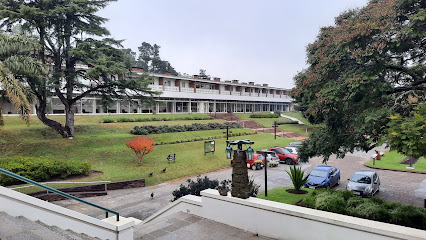
Parador Arequita
Experience delicious fast food at Parador Arequita in Minas – where local flavors meet casual dining!
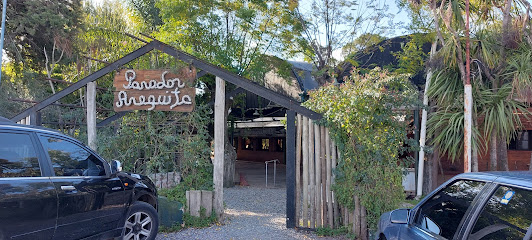
Ventorrillo de la Buena Vista
Discover Ventorrillo de la Buena Vista in Villa Serrana – where American cuisine meets breathtaking views in a cozy atmosphere.

Restaurante Ki-Joia
Discover the essence of Uruguayan fast food at Restaurante Ki-Joia in Minas - where local flavors meet friendly service.

Parador Parque Rodó
Discover delicious fast food at Parador Parque Rodó in Minas - where local flavors meet quick service in an inviting atmosphere.
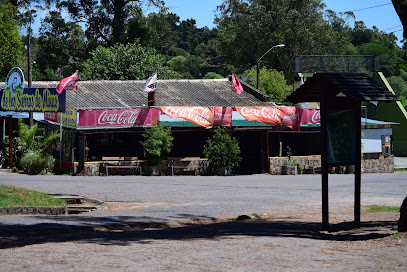
Penitente station - Sierra de Minas
Experience breathtaking views and delectable local cuisine at Penitente Station in the stunning Sierra de Minas.
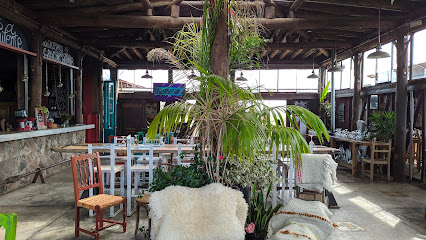
Ombú
Discover Ombú in Minas: A cozy pizza haven serving authentic Italian flavors amidst Uruguay's charming landscape.

Mesón de Las Cañas
Experience authentic Uruguayan cuisine at Mesón de Las Cañas in Villa Serrana – where culinary delight meets serene relaxation.

San Francisco de las Sierras
Experience tranquility at San Francisco de las Sierras: A serene resort hotel nestled in Lavalleja's breathtaking landscapes.

La Mia Cucina
Experience the perfect blend of Italian and Indian cuisine at La Mia Cucina in Villa Serrana - where every dish tells a story.

El Artesanal de Minas Resto
Experience authentic Uruguayan cuisine at El Artesanal de Minas Resto in the heart of Minas—where flavor meets tradition.

La Ultima Portera
Discover La Ultima Portera: A premier grill restaurant in Lavalleja offering exquisite Uruguayan asado amidst breathtaking riverside views.

Vidal
Experience authentic Uruguayan cuisine at Vidal in Minas - where tradition meets flavor in every dish.

Hotel Minas
Experience comfort and convenience at Hotel Minas, your perfect base for exploring the charming town of Minas in Lavalleja Department.

Rey Donnal's
Experience authentic Uruguayan cuisine at Rey Donnal's in Minas - where flavor meets tradition in a warm setting.
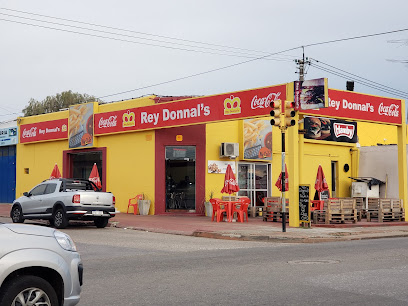
Markets, malls and hidden boutiques
Minas Shopping Terminal
Explore Minas Shopping Terminal: A vibrant shopping and dining destination in the heart of Minas, Uruguay, perfect for tourists seeking local culture.

Tienda Aiub
Experience the vibrant fashion scene at Tienda Aiub, Minas' top destination for stylish clothing and shoes.
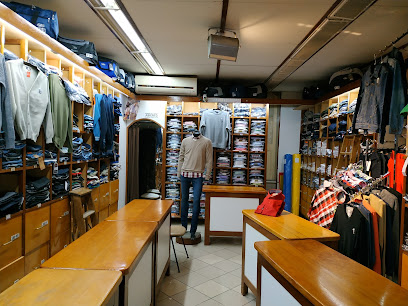
Freeland
Explore Freeland in Minas for trendy clothing that blends local culture with modern fashion - a must-visit for every traveler.

Tigres
Explore Tigres, the premier lighting store in Minas, where style meets functionality in exquisite light fixtures for every space.

Stampa Minas
Uncover unique Uruguayan treasures at Stampa Minas, a vibrant store in the heart of Minas, blending local craftsmanship with exceptional shopping experiences.
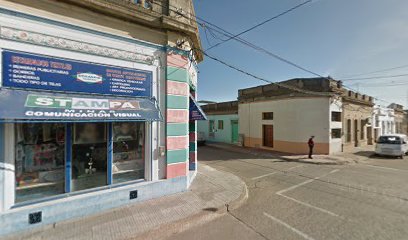
Agua de Luna Boutique
Discover the essence of local craftsmanship at Agua de Luna Boutique in Minas, where every purchase supports the artisans of Uruguay.
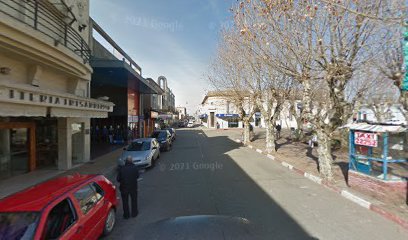
Indian Minas
Explore Indian Minas, a vibrant clothing store in the heart of Minas, offering a unique blend of traditional and contemporary fashion for every taste.
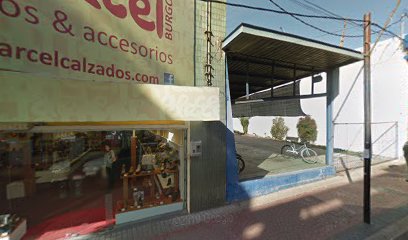
Bazar Cristal
Explore Bazar Cristal in Minas, Uruguay – a delightful toy store offering a charming collection of toys, home goods, and unique paper products.

La Burbuja
Discover La Burbuja, the chic dress store in Minas offering a stunning selection of stylish garments for every occasion.
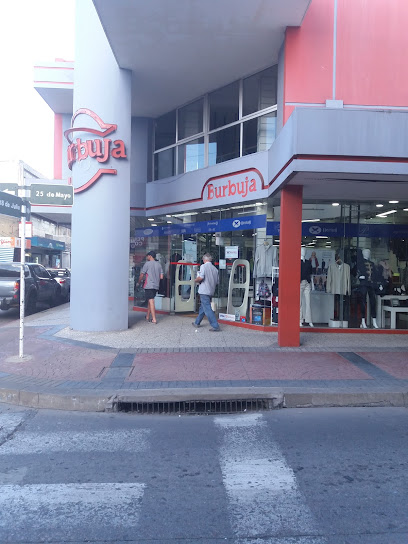
100% Pampa Diseños Rústicos
Explore 100% Pampa Diseños Rústicos for unique gifts and home goods reflecting the rich heritage of Minas, Uruguay, in a charming rustic setting.
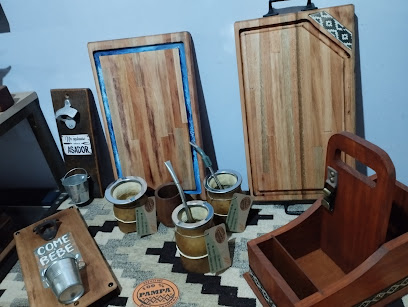
Selecto Tienda Online Relojes Uruguay
Explore Selecto Tienda Online Relojes in Minas, Uruguay for a unique collection of elegant watches and fashion accessories that cater to every style.
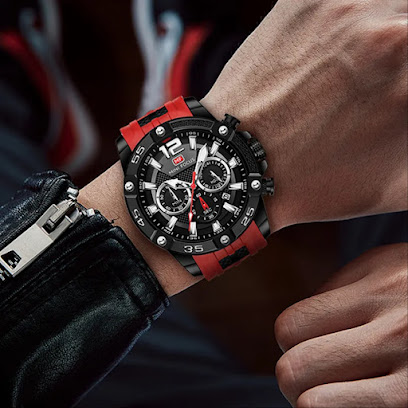
Alí boutique
Discover unique Uruguayan crafts and fashion at Alí Boutique in Minas, where local artistry meets exceptional shopping.

Tienda Noé
Discover unique fashion at Tienda Noé, a charming clothing store in Minas, Uruguay, showcasing local styles and quality apparel for every occasion.
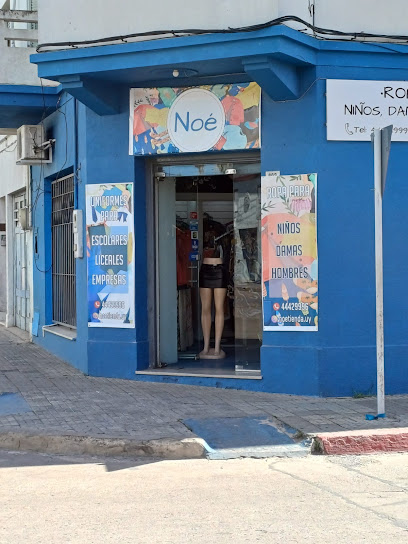
Lolita Minas
Explore unique fashion at Lolita Minas, a charming clothing store in the heart of Minas offering stylish options for every occasion.
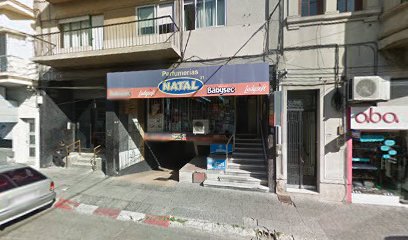
Trebol Regalos
Explore Trebol Regalos in Minas, Uruguay, for a unique collection of gifts and toys that reflects the local culture and charm.

Essential bars & hidden hideouts
Don Mario
Discover the vibrant nightlife at Don Mario, a favorite bar in Minas, Lavalleja, offering affordable drinks and a lively atmosphere.

Bar Y Parrilada LOS RODRIGUEZ
Experience the heart of Uruguayan culture with delicious grilled meats and a warm, inviting atmosphere at Bar Y Parrilada LOS RODRIGUEZ in Minas.
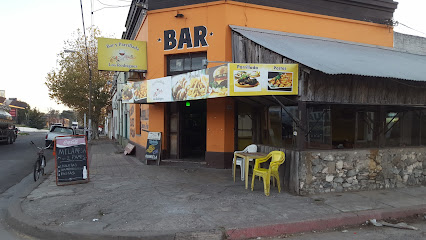
La Cueva
Discover the vibrant nightlife of Minas at La Cueva, a lively bar serving delicious fast food and hosting live music events.
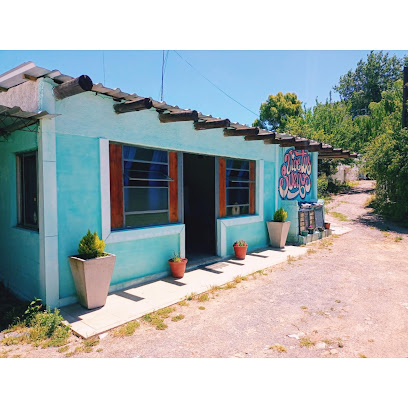
25 De Agosto
Discover the heart of Minas at 25 De Agosto, a vibrant bar offering local drinks and a welcoming atmosphere for every traveler.
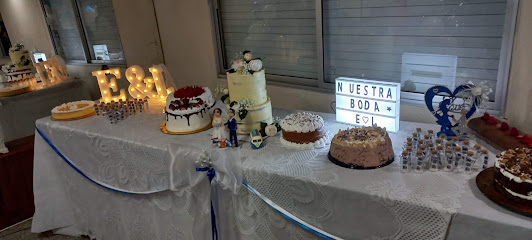
La Taberna
Experience the lively nightlife of Minas at La Taberna, a vibrant bar known for its cocktails, music, and friendly atmosphere.
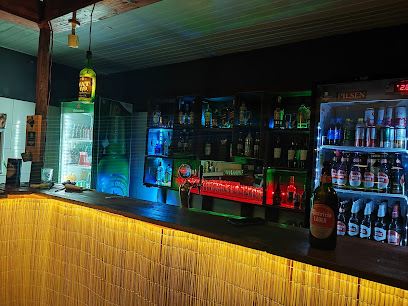
Bar Bertocchi
Discover the local charm and vibrant atmosphere at Bar Bertocchi in Minas, a perfect spot for relaxation and socializing with locals.

Bar El Palenque
Discover the vibrant culture of Minas at Bar El Palenque, where local flavors and a lively atmosphere await every visitor.
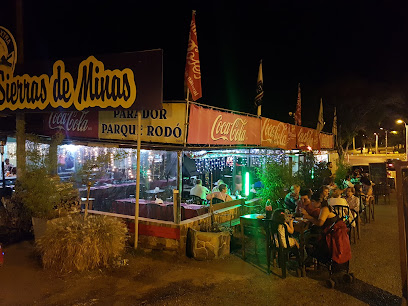
Las Margaritas
Discover the essence of Uruguayan cuisine at Las Margaritas in Minas, where vibrant flavors and a warm atmosphere await.
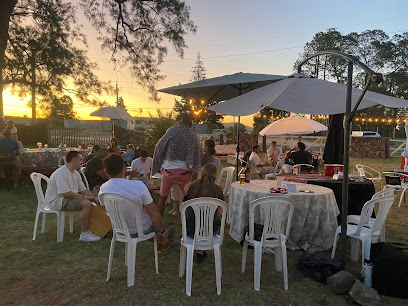
Bar La Cueva
Discover the lively vibes of Bar La Cueva in Minas, where local culture and delicious drinks come together for an unforgettable experience.

Präta snack & bar
Experience the vibrant flavors of Uruguayan cuisine at Präta Snack & Bar, a lively grill in the heart of Minas, perfect for casual dining and nightlife.

Campo Tavo
Discover the vibrant atmosphere of Campo Tavo, a local bar in San Francisco de las Sierras, serving delicious drinks and traditional Uruguayan cuisine.
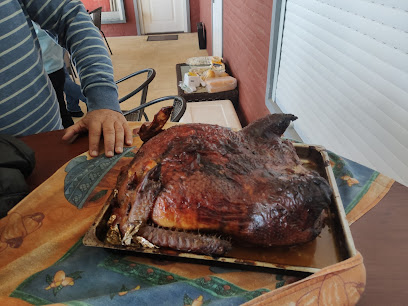
Bar del Parque
Discover the charm of Bar del Parque in San Francisco de las Sierras, where local drinks and a cozy atmosphere await every traveler.
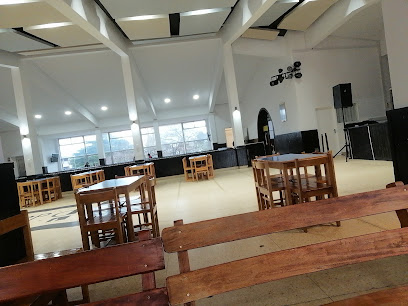
Cerveceria Patricia
Discover the vibrant Cerveceria Patricia in Minas, a beer hall offering a delightful selection of local brews and a lively atmosphere.
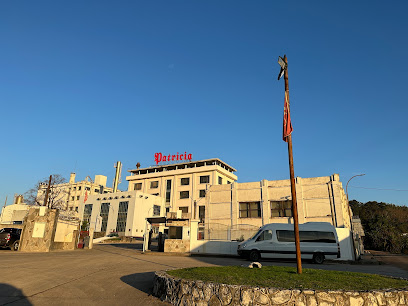
Casa de Pablo
Experience vibrant nightlife at Casa de Pablo, the premier gay bar in Minas, where inclusivity meets lively entertainment.
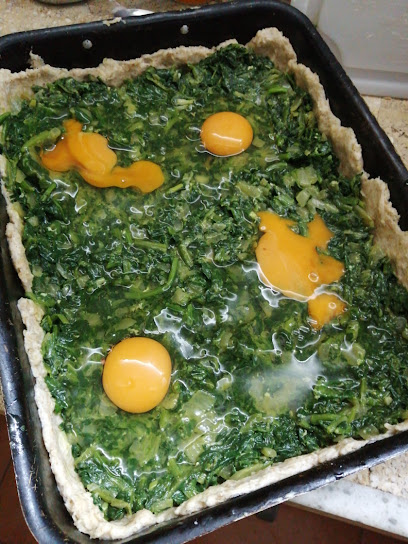
Mala Junta Pub
Discover the lively atmosphere of Mala Junta Pub in Minas, where great drinks and music create unforgettable nights in Uruguay.
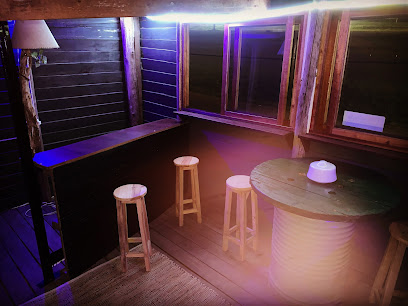
Local Phrases about Sierra de Minas
-
- HelloHola
[oh-la] - GoodbyeAdiós
[ah-dee-ohs] - YesSí
[see] - NoNo
[no] - Please/You're welcomePor favor/De nada
[por fah-vor/deh nah-da] - Thank youGracias
[grah-see-ahs] - Excuse me/SorryPerdón/Lamento
[pehr-dohn/lah-men-toh] - How are you?¿Cómo estás?
[koh-moh ehs-tahs] - Fine. And you?Bien. ¿Y tú?
[bee-ehn. ee too] - Do you speak English?¿Hablas inglés?
[ah-blahs een-glehs] - I don't understandNo entiendo
[noh ehn-tee-ehn-doh]
- HelloHola
-
- I'd like to see the menu, pleaseMe gustaría ver el menú, por favor
[meh goo-stah-ree-ah vehr ehl meh-noo pohr fah-vor] - I don't eat meatNo como carne
[noh koh-moh kahr-neh] - Cheers!¡Salud!
[sah-lood] - I would like to pay, pleaseMe gustaría pagar, por favor
[meh goo-stah-ree-ah pah-gahr pohr fah-vor]
- I'd like to see the menu, pleaseMe gustaría ver el menú, por favor
-
- Help!¡Ayuda!
[ah-yoo-dah] - Go away!¡Vete!
[veh-teh] - Call the Police!¡Llama a la Policía!
[yah-mah ah lah po-lee-see-ah] - Call a doctor!¡Llama a un médico!
[yah-mah ah oon meh-dee-koh] - I'm lostEstoy perdido
[ehs-toy pehr-dee-doh] - I'm illEstoy enfermo
[ehs-toy ehn-fehr-moh]
- Help!¡Ayuda!
-
- I'd like to buy...Me gustaría comprar...
[meh goo-stah-ree-ah kohm-prahr] - I'm just lookingSolo estoy mirando
[soh-loh ehs-toy mee-rahn-doh] - How much is it?¿Cuánto cuesta?
[kwan-toh kwehs-tah] - That's too expensiveEso es demasiado caro
[eh-soh ehs deh-mah-syah-doh kah-roh] - Can you lower the price?¿Puede bajar el precio?
[pweh-deh bah-har ehl pree-syoh]
- I'd like to buy...Me gustaría comprar...
-
- What time is it?¿Qué hora es?
[keh oh-rah ehs] - It's one o'clockEs la una en punto
[ehs lah oo-nah ehn poon-toh] - Half past (10)Son las diez y media
[sohn lahs dyehs ee myeh-dyah] - MorningMañana
[mah-nyah-nah] - AfternoonTarde
[tahr-deh] - EveningNoche
[noh-cheh] - YesterdayAyer
[ah-yehr] - TodayHoy
[oy] - TomorrowMañana
[mah-nyah-nah] - 1Uno
[oo-noh] - 2Dos
[dohs] - 3Tres
[trehs] - 4Cuatro
[kwah-troh] - 5Cinco
[seen-koh] - 6Seis
[say-ees] - 7Siete
[syeh-teh] - 8Ocho
[oh-choh] - 9Nueve
[nweh-veh] - 10Diez
[dyehs]
- What time is it?¿Qué hora es?
-
- Where's a/the...?¿Dónde está...?
[dohn-deh ehs-tah] - What's the address?¿Cuál es la dirección?
[kwal ehs lah dee-rehk-syon] - Can you show me (on the map)?¿Puedes mostrarme (en el mapa)?
[pweh-dehs mohs-trar-meh (ehn ehl mah-pah)] - When's the next (bus)?¿Cuándo es el próximo (autobús)?
[kwan-doh ehs ehl proh-ksee-moh (ow-toh-boos)] - A ticket (to ....)Un boleto (a ...)
[oon boh-leh-toh (ah)]
- Where's a/the...?¿Dónde está...?
History of Sierra de Minas
-
Before the arrival of Europeans, the Sierra de Minas region was inhabited by indigenous groups, predominantly the Charrúa people. These indigenous communities lived in harmony with the natural environment, utilizing the resources of the region for their sustenance and cultural practices. Artifacts and rock paintings found in the area provide a glimpse into their way of life and spiritual beliefs.
-
In the early 18th century, Spanish colonizers began to explore and settle in the Sierra de Minas region. The area became part of the Banda Oriental, a territory under Spanish control. During this period, the Spanish established small settlements and introduced European agricultural practices, which began to transform the landscape. The influence of Spanish architecture can still be seen in some of the older structures in the region.
-
The Sierra de Minas region is renowned for its rich mineral resources. In the late 19th and early 20th centuries, mining activities flourished, particularly the extraction of gold, silver, and other valuable minerals. This mining boom led to the development of infrastructure, including roads and railways, to support the industry. The remnants of old mining facilities and equipment can still be found scattered throughout the area, serving as a testament to this industrious period.
-
One of the significant historical events in the Sierra de Minas was the Battle of the Sierra de Minas, which took place during the Uruguayan Civil War in the mid-19th century. This battle was part of the larger conflict between the Blanco and Colorado political factions. The rugged terrain of the Sierra de Minas provided a strategic advantage for the combatants. The battle is remembered for its intensity and the bravery of those who fought in the challenging conditions.
-
The Sierra de Minas region is rich in cultural heritage, encompassing traditions passed down through generations. One of the most notable cultural events is the 'Fiesta de la Sierra,' a festival that celebrates the region's history, folklore, and natural beauty. The festival features traditional music, dance, crafts, and local cuisine, attracting visitors from all over Uruguay and beyond. It is a vibrant expression of the cultural identity of the people who call Sierra de Minas home.
-
In recent decades, there has been a growing awareness of the need to preserve the natural and historical heritage of the Sierra de Minas. Various conservation projects have been initiated to protect the unique flora and fauna of the region, as well as to restore and maintain historical sites. These efforts aim to ensure that future generations can continue to appreciate the rich tapestry of history and nature that defines the Sierra de Minas.
Sierra de Minas Essentials
-
Sierra de Minas is located in the Lavalleja Department of Uruguay. The nearest international airport is Carrasco International Airport in Montevideo, approximately 120 kilometers away. From Montevideo, you can take a bus to Minas, the main city in the region, which typically takes around 2 to 3 hours. Alternatively, you can rent a car and drive, enjoying the scenic routes and countryside.
-
While in Sierra de Minas, you can rely on local buses for transportation within the area, though they may be infrequent. Taxis and rideshare services are also available. For greater flexibility, especially if you plan to explore the surrounding natural parks and remote areas, renting a car is highly recommended.
-
The official currency in Uruguay is the Uruguayan Peso (UYU). Credit and debit cards are widely accepted in hotels, restaurants, and shops in Minas. However, it is advisable to carry some cash for smaller establishments and rural areas. ATMs are available in Minas, but ensure you have sufficient cash if you plan to explore more remote areas.
-
Sierra de Minas is generally a safe destination for tourists. However, like any travel destination, it is advisable to take standard precautions. Avoid walking alone at night in unfamiliar areas and keep an eye on your belongings in crowded places. Minas is relatively safe, but remain vigilant in less populated areas and avoid displaying valuable items.
-
In case of emergency, dial 911 for immediate assistance. The local police station and medical facilities are available in Minas. It is recommended to have travel insurance that covers medical emergencies. For minor health issues, there are pharmacies in Minas where you can purchase over-the-counter medications.
-
Fashion: Do dress comfortably and modestly, especially when visiting religious sites. Avoid wearing overly revealing clothing. Religion: Do respect local customs and traditions. Always cover your head when entering religious sites. Public Transport: Do be respectful and give up your seat to elderly passengers. Don’t eat or drink on public transport. Greetings: Do greet people with a handshake and a friendly smile. A slight bow of the head is also a sign of respect. Eating & Drinking: Do try local delicacies and accept food offerings graciously. Don’t refuse hospitality, as it is considered impolite.
-
To experience Sierra de Minas like a local, visit the local markets to buy fresh produce and traditional Uruguayan goods. Engage with locals, as they are often friendly and willing to share stories about the area's history and culture. Don’t miss exploring the Parque Salto del Penitente, a natural park with stunning waterfalls and hiking trails. For a unique experience, visit the historic mining sites that give the region its name.
Trending Landmarks in Sierra de Minas
-
Salto del Penitente
-
Laguna De Los Cuervos
-
Cerro Artigas
-
Cathedral of Minas
-
Valley thread of life
-
Valle de Domos - MINAS
-
Monumento al General Artigas
-
Cerro Mistico Country Inn
-
Cerro del Verdun
-
Santuario Nacional Nuestra Señora del Verdún
-
Reserva Natural Salus Park
-
Parque de las Sierras
-
Bienvenidos a Minas
-
Sierras de minas
Nearby Cities to Sierra de Minas
-
Things To Do in Punta del Este
-
Things To Do in Montevideo
-
Things To Do in Colonia del Sacramento
-
Things To Do in La Plata
-
Things To Do in Buenos Aires
-
Things To Do in Fray Bentos
-
Things To Do in Tacuarembó
-
Things To Do in Mar del Plata
-
Things To Do in Rosario
-
Things To Do in Encarnacion
-
Things To Do in Carmen del Parana
-
Things To Do in Córdoba
-
Things To Do in Villarrica
-
Things To Do in Puerto Iguazú
-
Things To Do in Foz do Iguaçu

